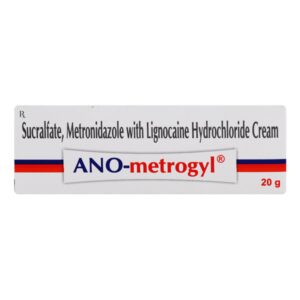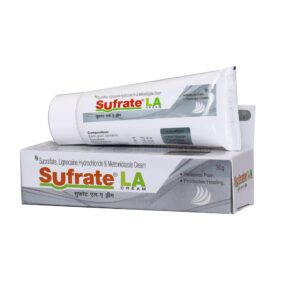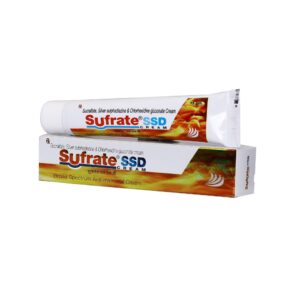METRONIDAZOLE + LIGNOCAINE + SUCRALFATE
Metronidazole: Metronidazole is an antibiotic drug that is commonly used to treat various bacterial and protozoal infections. It belongs to the nitroimidazole class of antibiotics and is available in both oral and topical formulations.
Metronidazole works by disrupting the DNA synthesis of the microorganisms, leading to cell death. It is particularly effective against anaerobic bacteria, which are bacteria that do not require oxygen to survive. It is also effective against certain protozoa, such as Giardia and Trichomonas.
The recommended dose of metronidazole depends on the condition being treated and may vary for different patients. For oral infections, the typical adult dose is 500 mg every 8 or 12 hours, while for vaginal infections, a single 2 g dose is often prescribed. It is crucial to follow the prescribed dose and duration of treatment as directed by a healthcare professional.
While metronidazole is generally well-tolerated, it can cause some side effects. Common side effects may include nausea, vomiting, diarrhea, abdominal discomfort, and a metallic taste in the mouth. Less common side effects may include dizziness, headache, and darkening or reddening of urine. In rare cases, metronidazole can cause a severe allergic reaction, so it is important to seek medical attention immediately if any signs of an allergic reaction occur, such as rash, itching, swelling, or difficulty breathing.
It is essential to inform the healthcare provider about any existing medical conditions or medications being taken before starting metronidazole treatment, as certain conditions or drugs may interact with metronidazole and cause adverse effects.
Overall, metronidazole is a widely used and effective antibiotic that is commonly prescribed for bacterial and protozoal infections. However, it is important to use it only as prescribed and to be aware of potential side effects and drug interactions.
Lignocaine: Lignocaine, also known as lidocaine, is a local anesthetic drug. It is commonly used to numb an area of the body to relieve pain or discomfort during medical procedures such as surgeries, dental work, or minor skin interventions. It can also be used in certain medical conditions like chronic pain management or cardiac arrhythmias.
The mechanism of action of lignocaine involves blocking nerve signals in a specific area of the body. It works by inhibiting the voltage-gated sodium channels, which are responsible for transmitting pain signals. By blocking these channels, lignocaine prevents the initiation and conduction of nerve impulses, resulting in temporary numbness or loss of sensation in the targeted region.
The dose of lignocaine can vary depending on the specific procedure or condition being treated. It is available in various forms, including injections, creams, gels, sprays, and patches. The dosage will be determined by the healthcare professional based on factors such as the patient’s age, weight, and the area being treated.
Common side effects of lignocaine include temporary numbness, tingling, or a feeling of coldness at the site of application or injection. Other common side effects may include skin irritation, redness, itching, or swelling. In rare cases, more serious side effects can occur, such as allergic reactions, difficulty breathing, dizziness, or irregular heartbeat. If any severe side effects occur, medical attention should be sought immediately.
It is important to note that lignocaine should only be used under the supervision of a healthcare professional. The drug should not be used in excessive amounts or on large areas of the body as it may result in systemic toxicity. In addition, it may interact with certain medications or medical conditions, so it is advisable to inform the healthcare provider about any existing medical conditions or medications before using lignocaine.
Sucralfate: Sucralfate is a medication used to treat stomach ulcers and prevent them from recurring. It belongs to a class of drugs known as mucosal protective agents.
The mechanism of action of sucralfate involves forming a protective barrier over the ulcer or damaged area in the stomach. This barrier acts as a physical shield, preventing further damage from stomach acid and other irritants. Sucralfate also promotes the secretion of substances that stimulate the production of mucus in the gastrointestinal tract, which further helps in protecting and healing the ulcer.
Sucralfate is usually taken orally, typically in the form of tablets or suspension. It is generally recommended to take sucralfate on an empty stomach, around one hour before meals or at bedtime. The recommended dose may vary depending on the severity of the ulcer and the individual’s response to treatment. It is important to follow the dosage instructions provided by the healthcare professional.
Like any medication, sucralfate may cause side effects. Common side effects include constipation, nausea, vomiting, flatulence, and dry mouth. These side effects are usually mild and temporary. However, if these symptoms persist or worsen, it is important to consult a doctor.
Rare but more severe side effects of sucralfate may include allergic reactions (such as rash, itching, swelling, severe dizziness, or difficulty breathing), severe stomach pain, black/tarry stools, or vomiting material that resembles coffee grounds. If any of these serious side effects occur, immediate medical attention should be sought.
It is important to note that sucralfate may interact with other medications, such as antacids or certain antibiotics, and may alter their effectiveness. Therefore, it is always important to inform the healthcare professional about all the medications and supplements being taken.
Overall, sucralfate is an effective medication for the treatment and prevention of stomach ulcers. It works by forming a protective barrier and promoting the healing process. It is important to take sucralfate as directed, and any concerning side effects should be reported to a healthcare professional.



